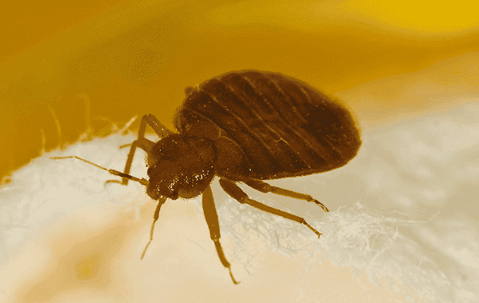Bed bugs. Outside of the fact that just thinking about them can give you the “heebie-jeebies,” what are some of the myths we believe are facts? What do we think these pests do, but they don’t, and vice versa? EnSec knows what’s true and what’s not and we can help you separate fact from fiction when it comes to bed bugs in Pensacola.
What do these bugs look like? They have a flat body about the size of an apple seed, and are oval and brownish in appearance. They feast on the blood of animals and humans, where afterward, their bodies swell and become reddish in color.
The bed bug can’t fly, but they sure can move quickly over floors, walls, and ceilings. The female can lay hundreds of eggs, containing nymphs. The nymph sheds its skin five times before reaching maturity and requires a meal of blood before each time. They can fully develop in as little as a month and produce three or more generations per year.
Now that you know the facts, let’s consider the myths.
Myth: Bed Bugs Only Happen In And Around Beds
The bed bug can enter the home through luggage, clothing, used beds, couches, or other items brought in from elsewhere. Their bodies make it easy for them to fit into tiny places about the width of a credit card, and though they might begin their lives in a mattress, box spring, or bed frame, they tend to scatter through the bedroom after some time. They have also been known to spread to other bedrooms or close by apartments if not treated.
Since bed bugs feed on blood, having them somewhere in your home is not a sign of being unclean; they are as content in immaculate homes and hotel rooms as they are in filthy ones. They can happen to anyone, and although they will move to other areas of the house, their love for blood will keep them where they can get an easy meal. This means they prefer sleeping areas.
Myth: Bed Bugs Spread Diseases
Bed bugs are a significant nuisance, but they aren’t known to spread or transmit diseases. These pests feed by piercing the skin and withdrawing blood through an elongated proboscis. They feed for three to ten minutes, become engorged, and then crawl away. Their bite is painless, but later after a while, the area will become itchy and a welt will form.
Most people don’t realize they have an infestation and may attribute the itching and welts to other causes. To confirm a bed bug infestation, the pest professionals at EnSec will perform an inspection, and if there is an infestation, we'll use heat treatment to thoroughly eradicate the problem.
Myth: Bed Bugs Are Too Small To See
Seeing as the grown adult is the size of an apple seed, these pests are tough to see, but they can be seen with the naked eye.
You need to look for common signs of infestation, such as:
- Bloodstains on your sheets or pillowcases
- Dark or rusty spots of bed bug excrement on sheets and mattresses, bedclothes, and walls
- Bed bug fecal spots, eggshells, or shed skins in areas where bed bugs hide
- An offensive, musty odor from the bugs’ scent glands
Myth: You Can Get Rid Of Bed Bugs On Your Own
Once upon a time in America, bed bugs were almost entirely eradicated. In the age of national and international air travel, however, infestations have increased.
You can take steps to limit a bed bug infestation, but there are few things you can do personally once they move in. Calling EnSec is a way to be proactive. We have an easy and eco-friendly remedy for dealing with bed bug infestations. Our heat treatment provides many benefits over other means of bed bug control:
- It requires no chemicals, which makes it eco-friendly and safe for children and pets.
- It’s lethal to bed bugs in all stages of development, from egg to adult.
- It reaches into areas, such as inside walls, where traditional treatments can’t reach.
- It takes just one treatment to eliminate your infestation.
So call EnSec for professional bed bug control in your Pensacola home.

